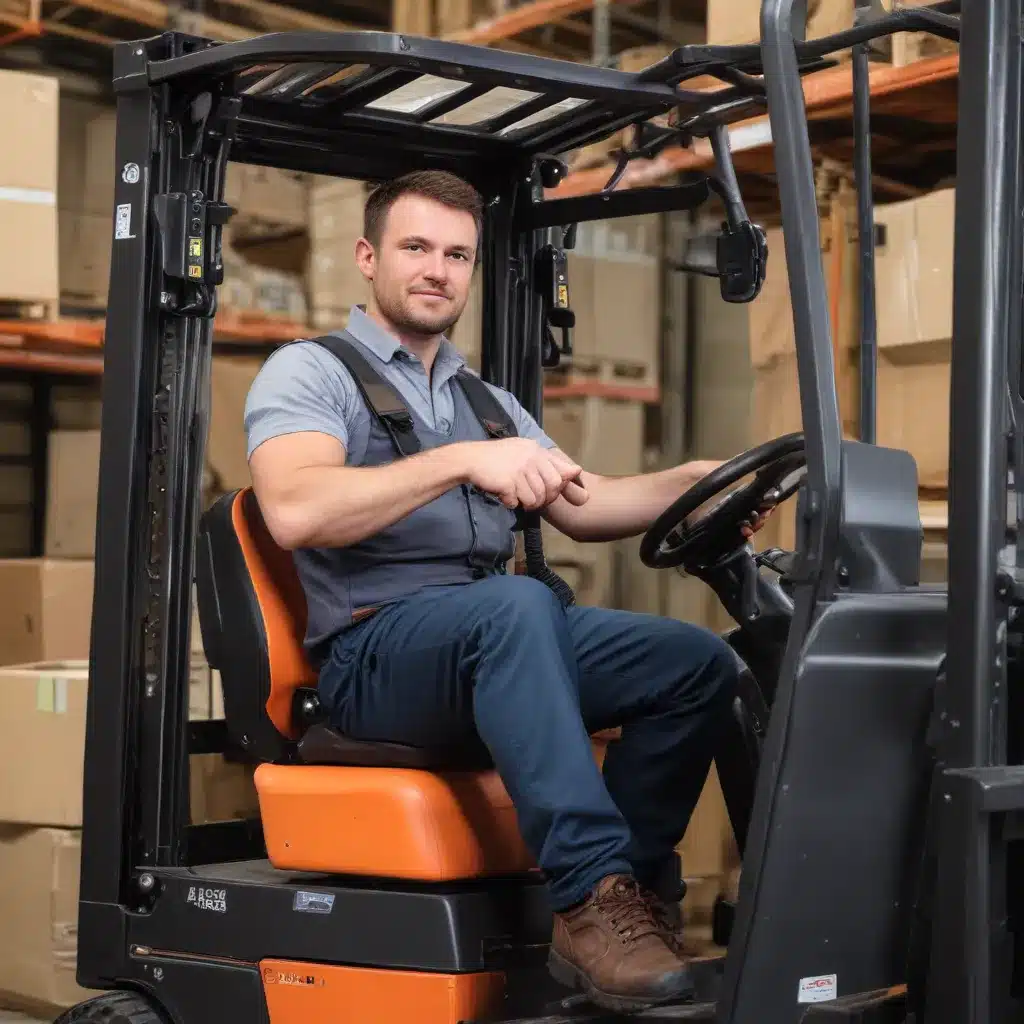
The Importance of Ergonomics in Forklift Operations
In the fast-paced world of logistics and material handling, the comfort and productivity of forklift operators are paramount. As an industry expert, I understand that the design of forklift seats plays a crucial role in minimizing operator fatigue, enhancing safety, and improving overall operational efficiency.
Ergonomics is the science of designing equipment and work environments to fit the human body and its capabilities. When it comes to forklift operations, ergonomic principles must be at the forefront of manufacturers’ design considerations. By prioritizing operator comfort and reducing physical strain, businesses can unlock a wealth of benefits that positively impact their bottom line.
Addressing Operator Fatigue through Seat Design
Forklift operators often face long shifts, repetitive movements, and challenging working conditions that can lead to significant physical fatigue. Traditional forklift seats, with their limited adjustability and minimal support, can exacerbate these challenges, leading to decreased productivity, increased risk of accidents, and higher rates of musculoskeletal disorders.
However, the latest advancements in forklift seat design are revolutionizing the operator experience. Manufacturers like Translift Bendi have recognized the critical importance of ergonomics and have incorporated innovative features to address operator fatigue.
Adjustable Seating for Customized Comfort
One of the key innovations in forklift seat design is the incorporation of adjustable features. Seats that can be easily adjusted in terms of height, backrest angle, and cushion depth allow operators to find their optimal seating position, reducing strain on the back, neck, and shoulders.
Translift Bendi’s forklifts, for example, feature ergonomically designed seats with adjustable forward and backward movement, as well as added side support in the backrest. These customizable features enable operators to maintain a comfortable, neutral posture throughout their shifts, minimizing the risk of fatigue-related injuries and enhancing overall productivity.
Improved Vibration Dampening
Another key factor in reducing operator fatigue is the management of vibrations. Prolonged exposure to whole-body vibrations can lead to musculoskeletal problems, decreased concentration, and increased stress levels. Forklift manufacturers have responded to this challenge by incorporating advanced vibration dampening systems into their seat designs.
Translift Bendi’s forklifts, for instance, feature specialized seat cushions and suspension systems that effectively absorb and dissipate vibrations, providing a smoother and more comfortable ride for the operator. This not only enhances the operator’s physical well-being but also improves their mental focus, enabling them to maintain a high level of performance throughout their shift.
Ergonomic Control Placement and Visibility
In addition to the seat itself, the overall ergonomics of the forklift’s control layout and visibility can greatly impact operator comfort and efficiency. Manufacturers like Translift Bendi have paid close attention to these details, designing intuitive control interfaces and optimizing the operator’s field of vision.
Strategically placed controls, such as mini levers and joysticks, reduce the need for excessive reaching and twisting, minimizing strain on the upper body. Furthermore, enhanced visibility through features like panoramic mirrors, rear-view cameras, and high-mounted LED lights help operators maintain awareness of their surroundings, reducing the cognitive load and improving overall safety.
The Impact of Ergonomic Design on Productivity and Safety
The integration of ergonomic principles into forklift seat design goes beyond just operator comfort; it has a direct impact on productivity and safety within the workplace.
Increased Productivity and Efficiency
When forklift operators are comfortable and free from fatigue, they can focus on their tasks more effectively, leading to improved productivity and efficiency. HCO Innovations has found that ergonomically designed material handling equipment, including forklifts, can enhance operator efficiency, reduce errors, and increase throughput. This translates into significant cost savings and a competitive edge for businesses.
Enhanced Safety and Reduced Injury Risks
Ergonomic forklift seat design also plays a crucial role in promoting workplace safety. By minimizing physical strain and fatigue, operators are less likely to experience musculoskeletal disorders or make mistakes that could result in accidents. Features like improved visibility, stability control systems, and intuitive control interfaces further enhance the overall safety of forklift operations, protecting both the operator and surrounding personnel.
The Future of Forklift Ergonomics
As the material handling industry continues to evolve, the focus on operator ergonomics is only expected to grow. Manufacturers like Translift Bendi are leading the way in integrating advanced technologies and innovative design principles to create forklift solutions that prioritize the well-being and productivity of the operator.
From the integration of smart systems and telematics to the exploration of alternative energy sources, the future of forklift ergonomics is poised to transform the way businesses approach material handling. By investing in ergonomically designed equipment, companies can unlock a wealth of benefits, including reduced operating costs, improved worker satisfaction, and enhanced overall operational efficiency.
Discover how Translift Bendi is redefining the forklift industry with its commitment to ergonomic innovation and operator-centric design. Contact them today to explore how their solutions can revolutionize your material handling operations.
Conclusion
In the fast-paced world of logistics and warehousing, the comfort and well-being of forklift operators are crucial to maintaining high levels of productivity and safety. By incorporating ergonomic principles into forklift seat design, manufacturers like Translift Bendi are revolutionizing the operator experience, reducing fatigue, and enhancing overall operational efficiency.
As the industry continues to evolve, the focus on ergonomics will only become more critical. By investing in forklift solutions that prioritize operator comfort and safety, businesses can unlock a wealth of benefits, from lower operating costs to improved worker satisfaction and reduced injury risks.
Explore the latest innovations in forklift ergonomics and discover how Translift Bendi is leading the charge in creating a more comfortable and productive material handling environment.

